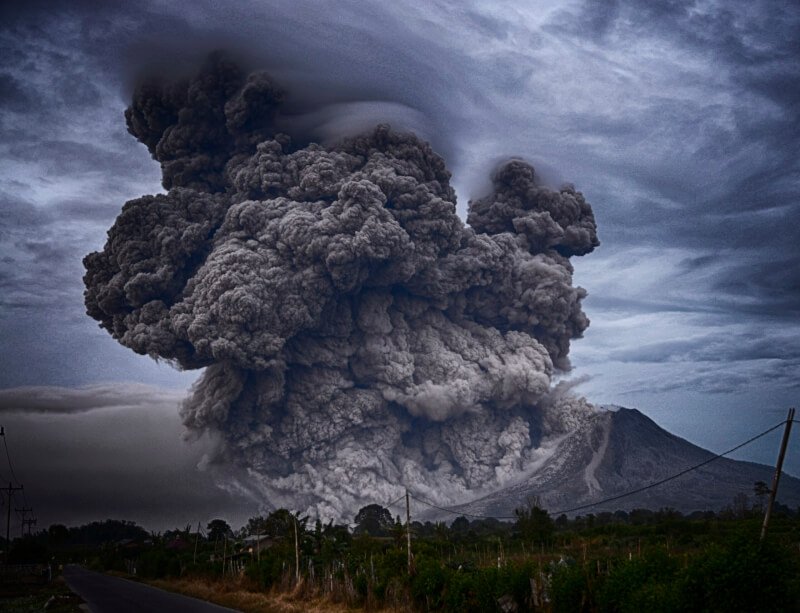In “The Prepper’s Blueprint: The Step-By-Step Guide To Help You Through Any Disaster,” you will discover a comprehensive and practical resource that equips you with the essential knowledge and skills needed to navigate through tumultuous times. From natural disasters to economic crises, this guide offers a clear and friendly approach to ensure you are well-prepared for any unexpected event. Whether you are new to prepping or a seasoned survivalist, this step-by-step blueprint will empower you to confidently face and overcome any disaster that comes your way. Let’s embark on this preparedness journey together and build a resilient future.
Chapter 1: Understanding Disaster Preparedness
1.1 What is disaster preparedness?
Disaster preparedness refers to the actions taken by individuals, families, and communities to minimize the impact of potential disasters. It involves thorough planning, acquiring necessary skills and knowledge, and stockpiling essential supplies to enhance survival and recovery during and after a disaster.
1.2 Why is disaster preparedness important?
Disaster preparedness is crucial because it empowers you to be proactive rather than reactive in the face of adversity. By being prepared, you significantly increase your chances of survival, minimize potential damages, and expedite the recovery process. It allows you to take control of the situation and reduce the burden on emergency services, enabling them to focus on the most critical cases.
1.3 Common types of disasters
Disasters can come in various forms, and understanding these types is essential for effective preparedness. Some common types of disasters include natural disasters like hurricanes, earthquakes, floods, and wildfires. Other types include man-made disasters such as terrorist attacks, civil unrest, and pandemics. Each type requires specific strategies and considerations for preparedness.
1.4 The psychology of survival
The psychology of survival plays a fundamental role in disaster preparedness. Understanding how the human mind reacts to stress, fear, and uncertainty can help individuals make rational decisions in high-pressure situations. Building mental resilience, remaining calm, and developing a positive mindset are critical aspects of surviving and navigating through disasters successfully.
Chapter 2: Assessing Risks and Building a Plan
2.1 Identifying potential threats
Identifying potential threats is the first step in disaster preparedness. It involves researching and understanding the specific hazards that are prevalent in your geographical area. This could include natural disasters as well as potential man-made threats like chemical spills or power outages. By understanding the threats you face, you can better plan and prioritize your preparedness efforts.
2.2 Conducting a risk assessment
Conducting a risk assessment involves evaluating the likelihood and potential impact of the identified threats. This assessment helps in determining which threats require immediate attention and which ones are less likely to occur. By understanding the risks associated with each threat, you can allocate your resources and efforts effectively towards mitigating those risks.
2.3 Creating an emergency plan
Creating an emergency plan is crucial in ensuring that you and your loved ones can respond swiftly and efficiently in a disaster. Your emergency plan should include evacuation routes, designated meeting points, emergency contact information, and a clear communication plan. It is vital to involve all members of your household in the planning process to ensure everyone is on the same page.
2.4 Involving your family/community
Disaster preparedness is a collective effort, and involving your family and community is essential for comprehensive safety. By discussing and sharing your emergency plan with your family members, you can ensure everyone is prepared and knows what to do in an emergency. Engaging with neighbors and participating in community preparedness programs fosters collaboration and creates a stronger support system during times of crisis.

Chapter 3: Essential Prepper Skills
3.1 First aid and medical skills
First aid and medical skills are invaluable during disasters, as immediate medical assistance may not be readily available. By learning essential first aid techniques, such as CPR, wound care, and basic triage, you can provide life-saving assistance to yourself and others in case of injuries or medical emergencies.
3.2 Navigation and orienteering
Knowing how to navigate and orient yourself is vital, especially if you need to evacuate or find your way to safety during a disaster. Learning basic map reading, compass use, and orienteering skills can help you navigate unfamiliar territory and choose the safest routes to your destination.
3.3 Fire starting and basic firefighting
Fire can be a significant hazard during a disaster, and knowing how to start a fire safely or extinguish one can be lifesaving. Learning fire starting techniques using various tools and materials, as well as basic firefighting skills, can help in preventing or mitigating fire-related disasters.
3.4 Water sourcing and purification
Access to clean drinking water is vital for survival, especially when infrastructure may be compromised during a disaster. Learning how to source water from natural sources and purify it using filtration, boiling, or chemical treatment methods ensures a continuous supply of safe water for you and your family.
3.5 Shelter construction and emergency repairs
Having the knowledge and skills to construct temporary shelters and perform basic emergency repairs is essential during a disaster. By learning how to build simple structures using available materials and fix damaged infrastructure, you can provide protection and safety for yourself and others in your community.
Chapter 4: Stocking Up on Supplies and Food Storage
4.1 Understanding the basics of stockpiling
Stockpiling involves the accumulation of essential supplies to sustain you and your family during a disaster. Understanding the basics of stockpiling helps you determine what items to prioritize, such as food, water, medication, and essential tools. It also involves considering factors like shelf life, storage conditions, and rotation of supplies.
4.2 Preparing an emergency supply kit
An emergency supply kit is a collection of essential items that you can easily grab and take with you in the event of an evacuation or emergency. It should include items such as non-perishable food, water, a first aid kit, a flashlight, batteries, a multi-tool, and important documents. Preparing a well-stocked and easily accessible emergency supply kit ensures you have the necessary resources at hand during a disaster.
4.3 Building a long-term food storage
In addition to short-term emergency supplies, building a long-term food storage is crucial for extended periods when access to regular food sources may be limited. This involves acquiring and properly storing a variety of non-perishable food items with long shelf lives, such as canned goods, grains, and dehydrated foods.
4.4 Managing water storage
Water is an essential resource for survival, and ensuring an adequate supply requires appropriate water storage practices. This includes using food-grade containers, regularly rotating water supplies, and implementing water purification methods to maintain water quality and availability during an extended emergency.
4.5 Importance of rotation and expiry dates
Regularly rotating and checking the expiry dates of your emergency supplies is critical to maintaining their effectiveness and safety. Consumable items like food, water, and medication should be regularly replaced to ensure freshness and potency. By adhering to rotation schedules and monitoring expiry dates, you can confidently rely on your stockpile when needed.

Chapter 5: Securing Your Home and Property
5.1 Evaluating home security vulnerabilities
Evaluating the vulnerabilities of your home and property is an important step in disaster preparedness. This involves identifying areas that may be prone to intrusion or damage and implementing necessary security measures to protect against potential threats. Assessing factors such as weak entry points, inadequate lighting, or lack of surveillance can help you devise effective strategies to secure your home.
5.2 Reinforcing doors and windows
Securing doors and windows is crucial in safeguarding your home against unauthorized access during a disaster. Reinforcing entry points with sturdy locks, shatterproof glass, and security film can act as deterrents and can significantly increase the level of protection.
5.3 Installing security systems
Installing a comprehensive security system in your home adds an extra layer of protection and ensures prompt response to potential threats. This may include burglar alarms, motion sensors, outdoor cameras, and a monitoring service. A well-integrated security system enhances the safety and security of your property.
5.4 Creating a safe room
A safe room provides a secure space within your home where you can seek refuge during a disaster or home invasion. It should be fortified with strong walls, a reinforced door, and emergency supplies. Creating a safe room ensures you have a designated area to retreat to in times of danger.
5.5 Outdoor perimeter security measures
Securing the outdoor perimeter of your property is essential for early detection and prevention of potential threats. This can be achieved by installing outdoor lighting, durable fencing, security cameras, and motion-activated alarms. Implementing such measures acts as a deterrent and helps create a secure environment.
Chapter 6: Developing Communication Strategies
6.1 Establishing communication channels
Establishing clear communication channels with your family, community, and emergency services is vital during a disaster. Everyone should be aware of the designated communication methods, such as phone calls, text messages, or walkie-talkies, and have access to the necessary devices for effective communication.
6.2 Utilizing different communication devices
Having a variety of communication devices ensures redundancy in case one method fails or becomes unavailable. This may include cell phones, satellite phones, two-way radios, and specialized emergency radios. Being familiar with the operation and limitations of each device allows you to stay connected and informed during a crisis.
6.3 Setting up emergency radios
Emergency radios, such as NOAA Weather Radio, provide crucial information during disasters and can operate even when other communication systems fail. Setting up and regularly testing these radios allows you to receive weather alerts, news updates, and emergency broadcasts, keeping you well-informed and prepared.
6.4 Establishing a network of contacts
Building a network of contacts within your community and developing a support system is essential for effective communication and resource sharing during a disaster. This can include neighbors, local emergency services, and community groups. Establishing these connections in advance strengthens resilience and improves overall disaster response.
6.5 Developing a communication plan for different scenarios
Creating a communication plan for different scenarios helps ensure efficient and effective communication based on the specific circumstances of a disaster. This includes identifying primary and secondary communication methods, establishing designated meeting points, and assigning roles and responsibilities to each member of your household or community.

Chapter 7: Maintaining Health and Sanitation
7.1 Importance of hygiene during disasters
Maintaining proper hygiene during disasters is crucial in preventing the spread of diseases and infections. This includes practices such as regular handwashing, maintaining clean living conditions, and practicing safe food handling and preparation.
7.2 Proper waste management
Proper waste management is essential in maintaining a safe and sanitary environment during a disaster. This involves segregating and disposing of waste appropriately, using sanitary facilities or alternative options like portable toilets, and implementing proper hygiene practices to minimize health risks.
7.3 Establishing sanitation practices
Establishing sanitation practices in a disaster scenario can be challenging but is essential for health and wellbeing. This includes setting up handwashing stations, providing access to clean water and sanitation facilities, and promoting personal hygiene measures among individuals and within communities.
7.4 Managing personal health and medications
Managing personal health and medications is critical during a disaster, especially for individuals with pre-existing medical conditions. Ensuring an adequate supply of medications, keeping medical records readily accessible, and seeking professional medical assistance, if available, are essential steps in maintaining personal health and well-being.
Chapter 8: Mental and Emotional Preparedness
8.1 Coping with stress and anxiety
Coping with stress and anxiety is crucial during and after a disaster. Understanding stress management techniques, practicing mindfulness, and seeking support from loved ones or mental health professionals can help individuals maintain emotional well-being and resilience in challenging situations.
8.2 Building resilience and mental strength
Building resilience and mental strength is an ongoing process that prepares individuals to bounce back from adversity. This involves developing positive coping mechanisms, cultivating optimism, and nurturing a resilient mindset to effectively adapt to and overcome the challenges posed by disasters.
8.3 Establishing emotional support networks
Establishing emotional support networks is vital for maintaining mental well-being during and after a disaster. This can include family, friends, support groups, or seeking professional counseling services. Having a reliable network to turn to for emotional support fosters a sense of belonging, reduces feelings of isolation, and helps individuals navigate through the emotional challenges of a disaster.
8.4 Strategies for maintaining morale during a disaster
Maintaining morale during a disaster is crucial for staying motivated and positive. Engaging in activities that provide a sense of normalcy, fostering a supportive and uplifting environment within your household or community, and focusing on gratitude and small victories are strategies that can boost morale and help individuals maintain a positive outlook.

Chapter 9: Developing Survival Skills and Self-Defense
9.1 Learning basic survival skills
Learning basic survival skills equips individuals with the knowledge and abilities necessary to withstand and overcome challenging conditions during a disaster. These skills may include building shelters, finding and purifying water, foraging for food, starting fires, and navigation. Acquiring these skills enhances self-reliance and increases the chances of survival in adverse situations.
9.2 Understanding self-defense techniques
Understanding self-defense techniques is essential for personal safety during a disaster, especially in situations where law enforcement may be overwhelmed or unavailable. Learning basic self-defense moves, situational awareness, and de-escalation techniques can help individuals protect themselves and their loved ones.
9.3 Acquiring essential tools and weapons
Acquiring essential tools and weapons should be done responsibly and in accordance with local laws and regulations. Items such as multi-tools, knives, and non-lethal self-defense devices can aid in survival and protection during a disaster. Proper training and familiarity with these tools ensure safe and effective usage.
9.4 Situational awareness and self-protection strategies
Developing situational awareness is critical in identifying potential threats and making informed decisions for self-protection. By being alert to one’s surroundings, recognizing indicators of danger, and implementing appropriate avoidance or defensive strategies, individuals can significantly enhance their personal safety during a disaster.
Chapter 10: Evacuation and Bugging Out
10.1 When to evacuate
Knowing when to evacuate is a critical decision during a disaster. Monitoring official advisories, weather conditions, and local evacuation orders will help determine when it is necessary to leave your location for a safer area. Staying informed and having a pre-determined evacuation plan in place ensures timely and safe relocation.
10.2 Establishing evacuation routes
Establishing evacuation routes in advance is imperative for ensuring a smooth and efficient evacuation process. Familiarize yourself with multiple evacuation routes, considering different scenarios and potential road closures. Have maps, GPS devices, or navigation apps readily available to guide you to your designated safe location.
10.3 Packing essential items for evacuation
When evacuating, it is crucial to pack essential items that will sustain you and your family during the journey and initially at the new location. This may include a well-stocked emergency supply kit, important documents, clothing, personal hygiene items, medications, and any necessary specialized equipment.
10.4 Finding temporary shelter
In the event of an evacuation, finding temporary shelter may be necessary. Research and identify potential locations such as hotels, emergency shelters, or friends and family in safer areas. Pre-planning and having multiple options available ensures you have a safe place to stay until it is safe to return home.
10.5 Dealing with transportation challenges
Transportation challenges may arise during evacuations, and being prepared for such scenarios is essential. This may involve having alternative means of transportation available, knowing how to manage fuel shortages or vehicle breakdowns, or exploring public transportation options. By considering potential obstacles and having contingency plans in place, you can navigate transportation challenges effectively.



